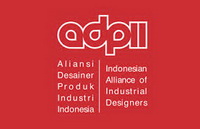The effect of dyeing duration and fixative on the final results of textile dyeing using purple sweet potato peel
Abstract
The fashion industry is one of the creative sectors that has significantly impacted Indonesia's economic growth. During this pandemic, the Ministry of Industry held a training program to spur the competitiveness and productivity of the textile and textile product (TPT) industry so that they can continue to run their businesses amid the pressure of the Covid-19 pandemic impact. The industries must be more innovative to be competitive in domestic and foreign markets. In this study, purple sweet potato peel was applied as a textile coloring pigment, considering its novelty and innovation value. It is expected to be an innovation in Indonesian creative industry products. So far, in the realm of textiles and fashion, purple sweet potato peel has been used as a natural textile dye, but it is less popular than other natural dyes. In addition, in Indonesia, purple sweet potato is a plant that grows throughout the year, with high quantity production and consumption rates, so that the waste of it can be used as a natural textile dye. To optimize the use of purple sweet potato peel, this study analyzes the effect of indicators on the dyeing process: the dyeing duration and the fixative used
Keywords
Full Text:
PDFReferences
Ahmad, A. F., & Hidayati, N. (2018). Pengaruh jenis mordan dan proses mordanting terhadap kekuatan dan efektifitas warna pada pewarnaan kain katun menggunakan zat warna daun jambu biji Australia. Indonesia Journal of Halal, 1(2), 84-88. https://doi.org/10.14710/halal.v1i2.4422
Chintya, N., & Utami, B. (2017). Ekstraksi tannin dari daun sirsak (Annona muricata L.) sebagai pewarna alami tekstil. JC-T (Journal Cis-Trans): Jurnal Kimia Dan Terapannya, 1(1). http://dx.doi.org/10.17977/um026v1i12017p022
Fatimatuzahro, D., Tyas, D. A., & Hidayat, S. (2019). Pemanfaatan Ekstrak Kulit Ubi Jalar Ungu (Ipomea batatas L.) sebagai Bahan Pewarna Alternatif untuk Pengamatan Mikroskopis Paramecium sp. dalam Pembelajaran Biologi. Al-Hayat: Journal of Biology and Applied Biology, 2(1), 106-112. http://dx.doi.org/10.21580/ah.v2i1.4641
Heruka, S., & Widihastuti, W. D. (2018). Pengaruh Jenis Zat Fiksasi terhadap Ketahanan Luntur Warna pada Kain Katun, Sutera dan Satin Menggunakan Zat Warna dari Kulit Ubi Ungu (Ipomoea Batatas L.). Retrieved from http://eprints.uny.ac.id/id/eprint/61023.
Lestari, D. W., & Satria, Y. (2017). Pemanfaatan kulit kayu angsana (Pterocarpus indicus) sebagai sumber zat warna alam pada pewarnaan kain batik sutera. Dinamika Kerajinan dan Batik, 34(1), 35-42.
Lorensa, E., Hidayah, N. (2022). Pengaruh Inovasi Produk, Orientasi Pasar, dan Media Sosial Terhadap Kinerja UMKM Fashion. Jurnal Manajerial dan Vol. 04, No. 03, Juli 2022, 739-748
Nugraha, Jakariya., Yuniar, Emma., Rakhmatiara. (2020). Pemanfaatan Daun Rami Sebagai Bahan Zat Warna Alam dan Fungsionalisasinya Pada Pencelupan Kain Kapas dan Sutera. Arena Tekstil Vol. 35 No. 1, 2020 : 29-38. Balai Besar Tekstil, Badan Penelitian dan Pengembangan Industri, Kementerian Perindustrian
Paryanto., Nur, Adrian., Nurcahyanti, Desi. (2018). Produksi dan Aplikasi Zat Warna Alami dari Kulit Kayu Mahoni dan Kulit Kayu Tingi untuk Batik di Desa Kuwiran, Kecamatan Banyudono, Kabupaten Boyolali. Momentum, Volume 14 No. 2 Oktober 2018. Fakultas Teknik-Universitas Wahid Hasyim Semarang
Payadnya, IPAA., & Jayantika, IGANT. (2018). Panduan Penelitian Eksperimen Beserta Analisis Statistik dengan SPSS. Yogyakarta: CV. Budi Utama
Pujilestari, Titiek. (2017). Optimasi Pencelupan Kain Batik Katun dengan Pewarna Alam Tingi (Ceriops tagal) dan Indigofera Sp. Dinamika Kerajinan dan Batik, Vol. 34, No. 1, Juni 2017, 53-62. Balai Besar Kerajinan dan Batik, Kementerian Perindustrian
Ramadhan, M. S., Yulianti, K. N., & Ananta, D. (2022). Inovasi Produk Fashion dengan Menerapkan Karakter Visual Chiaroscuro Menggunakan Teknik Cetak Tinggi Cukil Kayu Block Printing. Gorga: Jurnal Seni Rupa, 11(1), 192-201. https://doi.org/10.24114/gr.v11i1.33052
Setiawan, E., Hidayatulloh, A., & Widiastuti, T. (2020). Produksi Nasi Instan Berbasis Diversifikasi Pangan Lokal Ubi Ungu Sebagai Pangan Darurat Fungsional. Journal of Food and Culinary, 3(2), 62-71. https://doi.org/10.12928/jfc.v3i2.3922
Siagian. (2015). Pengaruh Jenis Pelarut Terhadap Kualitas Warna yang Dihasilkan dari Ubi Jalar Ungu (Impomoea Batatas I) Sebagai Zat Pewarna Alami Tekstil. Thesis. Politeknik Negeri Sriwijaya
Tuhumury, H. C., Ega, L., & Keliobas, N. (2018). Pengaruh Substitusi Tepung Ubi Jalar Ungu Terhadap Karakteristik Kue Kering. AGRITEKNO: Jurnal Teknologi Pertanian, 7(1), 30-35. https://doi.org/10.30598/jagritekno.2018.7.1.30
Tumbelaka, R. M. F. V., & Herlambang, S. (2021). Sarana Pengembangan Mode Streetwear di Jakarta. Jurnal Sains, Teknologi, Urban, Perancangan, Arsitektur (Stupa), 3(1), 143-152.
Wahmuda, Faza. (2020). Desain Produk dan Tantangan Industri Kreatif di Era New Normal: Perkembangan Industri Kreatif Kerajinan Lokal Berbasis Eksperimen Material. Samudra Biru
Yunilawati, R., Yemirta, Y., Cahyaningtyas, A. A., Aviandharie, S. A., Hidayati, N., & Rahmi, D. (2018). Optimasi Proses Spray Drying Pada Enkapsulasi Antosianin Ubi Ungu. Jurnal Kimia dan Kemasan, 40(1), 17-24. http://dx.doi.org/10.24817/jkk.v40i1.3761
Zerin, I., & Foisal, A. B. M. (2016, October). Effect of Mordanting Process on Cotton Dyeing with Acacia Catechu. In Proceedings of the 3rd Textile Research Conference (TRC) (Vol. 29).
Zhang, Y., Zhou, Q., Xia, W., Rather, L. J., & Li, Q. (2022). Sonochemical mordanting as a green and effective approach in enhancing cotton bio natural dye affinity through soy surface modification. Journal of Cleaner Production, 336, https://doi.org/10.1016/j.jclepro.2022.130465
DOI: https://doi.org/10.24821/productum.v5i2.5048
Refbacks
- There are currently no refbacks.
p-ISSN 2477-7900 | e-ISSN 2579-7328

This work is licensed under a Creative Commons Attribution 4.0 International License.
Like & Follow Us










